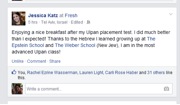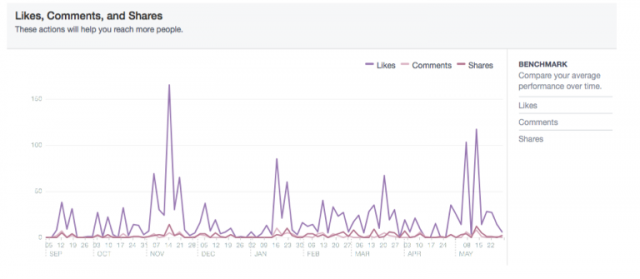The most valuable mile marker of an organization’s social media maturity is how they integrate the tools, content and social experience into their organization’s operations and overall strategy. Technology (of any sort) shouldn’t just be layered on top of status quo operations, and it isn't actually about the technology. Leaders must be insightful about what they are really trying to change or accomplish, and then align the tools, skills, tactics, culture and workflow to support it. Often it's the soft and fuzzy side of technology that's the hardest part to get right.
For example, a rigid organizational culture will not support the emergent nature of social media communications and community building. A hierarchical staffing structure will isolate social media responsibilities with a person in the office rather than promoting stronger relationships among all. A broadcast communications strategy will fall flat (or worse, do harm) in a conversational and collaborative landscape.
Thus, one of the greatest challenges of successfully bringing your organization into the connected age is to recognize the need to evolve organizational culture, and to take steps to do it purposefully and productively.
In this year’s Jewish Day School Social Media Academy, produced in collaboration with the AVI CHAI Foundation, 15 schools learned new skills and developed new strategies for their social media efforts. They engaged alumni and raised funds, and some even recruited new families to their schools. But perhaps even more importantly, they learned how to more fully integrate social media into their schools’ culture and operations, from recruitment to alumni engagement, from fundraising to community building. We can learn much from their pioneering work, experimentation and accomplishments.
So here are the top 5 integration lessons from this year’s academy:
1) Get Everyone Rowing in the Same Direction. There’s a delicate balance between having a coordinated strategy, and cramping creative people’s style. At The Epstein School, for example, the Academy team decided to explore Pinterest as a tool to engage parents and prospective parents. They soon realized that different departments (for example, the library) had already started experimenting with Pinterest and established a bit of a following. They are consolidated the efforts to help each department use Pinterest effectively, while creating one brand presence and attracting families to explore all of the various boards. They are building up toward a launch in the fall with content that will be valuable for both current and prospective parents, and shows the school’s priorities and strengths in action.
2) It’s Everyone’s Job. Social media responsibility doesn’t live only with one staff person. Content creation and curation is everyone’s job, and within a school community, parents and students play a role as well. The Cohen Hillel Academy embraced this ethos throughout their school. They used their social fundraising campaign as an opportunity to raise awareness of and engagement with their school’s newly-articulated strategic focus on Expeditionary Education, Joyful Judaism, and Community Partnerships. They looked for ways to engage students in the concepts (e.g., speaking about “Joyful Judaism” at a school assembly and asking kids to draw a picture of what it means to them) and used the campaign as a jumping-off point for richer, more thoughtful conversations with parents. Noah Hartman, Head of School at Cohen Hillel has been tweeting throughout the year, increasing accessibility for students and parents alike, curating educational resources and insights, building community, and being playful (like a Vine video announcing a snow closure!)
The Leo Baeck Day School in Toronto inaugurated “LBTV Action News” as a vehicle for telling the school’s story, and to enrich the curriculum. In 60 to 90 second installments, students did standup spot “news reports,” on selected events and subjects. It was effective in terms of growing our social media reach. Parents are our main audience on Facebook – which is our main social medium — and they love seeing children doing the presenting as well as being the subjects of a video. Communications Director David Bale leveraged his background as a radio news reporter to teach students how to prepare an intro, segue to an interviewee and how and what to ask, and summing up in an extro/sign off. They learned the proper way to stand, hold a mic, and to think in terms of their audience of Internet viewers watching a small frame video screen.
3) It’s all about the Culture. Society is based on cultural – norm, expectations, rituals. You know the nuance of what’s appropriate or respectful in various places because you pick up on cues – dress, tone of voice, pecking orders, etc. Your online culture is no different. The Epstein School was focusing on increasing engagement, and knew that to be successful, their parent community needed to feel like it was their space, not just a broadcast from the school office. They developed a training program – starting with parent volunteers in their leadership program – to help parents learn social media skills and understand how they can participate and why it makes a difference. Their reach, engagement, tagging, and sharing has increased tremendously as their parent community has demonstrated the culture they seek to nurture. Similarly, The Davis Academy has engaged Host Committee Members, Parent Ambassadors, and Faculty Members to play a more active and informed role in their social spaces, and will be kicking off their work in the fall with a social media orientation.
4) Let It Go, Let It Go. The Ida Crown Academy (grades 9-12) focused on recruitment this year. Their strategy included reaching middle school students to get them excited about attending high school there, rather than always communicating directly with the parents of prospective students. In order to reach middle school students, they tapped their high schoolers to make the case that ICJA is a wonderful place to go to school. Hearing directly from the students was more authentic and trustworthy, and more relevant. They decided to hand over their Instagram account to current high school students (with supervision) who were encouraged to post photos as a real window into life as an ICJA student. They posted about field trips, special school activities, and day-to-day life at the school. The students enjoyed it (after all, most high school students are spending more time on Instagram than Facebook these day so it’s a platform they’re comfortable with and like to use). As a result, they’ve seen a growing number of prospective students start following their Instagram account and liking their content.
5) Integrate! Social media isn’t a layer on top of your communications and engagement, it’s a tool that should be integrated into everything you do. The Frisch School decided to coordinate a sports breakfast fundraiser with their social fundraising campaign. Knowing the visual power on social media, they brought the Cougar back as a symbol of our various sports teams. They photographed students, teachers, and faculty with the Cougar at various events or just around the school holding up signs saying things like “We Support the Cougar” or “The Hockey Team Supports the Cougar”. The meme became popular amongst the students that the student-produced newsletter decided to create graphics and write articles about Supporting the Cougar, and the Student Video Production Club created a video with a Rocky theme (the special guest at the live Sports Breakfast was the Modern Orthodox boxer Dmitriy Salita). The campaign created valuable energy on the ground and for the live event, as well as produced priceless content and garnered great engagement and financial support online.
These are just a few of the valuable lessons learned in the JDS Academy this year. You can explore the lessons and activities of all of the schools through their blog posts tagged #JDSacademy. You’re also invited to drop into the ongoing conversation in our JDS Academy Facebook Group. Got lessons to add, or examples of how you’ve put these 5 into practice? Let us know in the comments.









 Given the power of online videos, we inaugurated LBTV Action News as a vehicle for telling the school’s story. In 60 to 90 second installments, students did standup spot “news reports,” on selected events and subjects. It was effective in terms of growing our social media reach. Parents are our main audience on Facebook – which is our main social medium — and they love seeing children doing the presenting as well as being the subjects of a video. It lent an additional appeal, as opposed to watching the expected administrator or teacher talking head tell about the school. And they were eager to share the Facebook postings, as well. Some of our most shared and far-reaching videos on Facebook were LBTV Action News items.
Given the power of online videos, we inaugurated LBTV Action News as a vehicle for telling the school’s story. In 60 to 90 second installments, students did standup spot “news reports,” on selected events and subjects. It was effective in terms of growing our social media reach. Parents are our main audience on Facebook – which is our main social medium — and they love seeing children doing the presenting as well as being the subjects of a video. It lent an additional appeal, as opposed to watching the expected administrator or teacher talking head tell about the school. And they were eager to share the Facebook postings, as well. Some of our most shared and far-reaching videos on Facebook were LBTV Action News items.